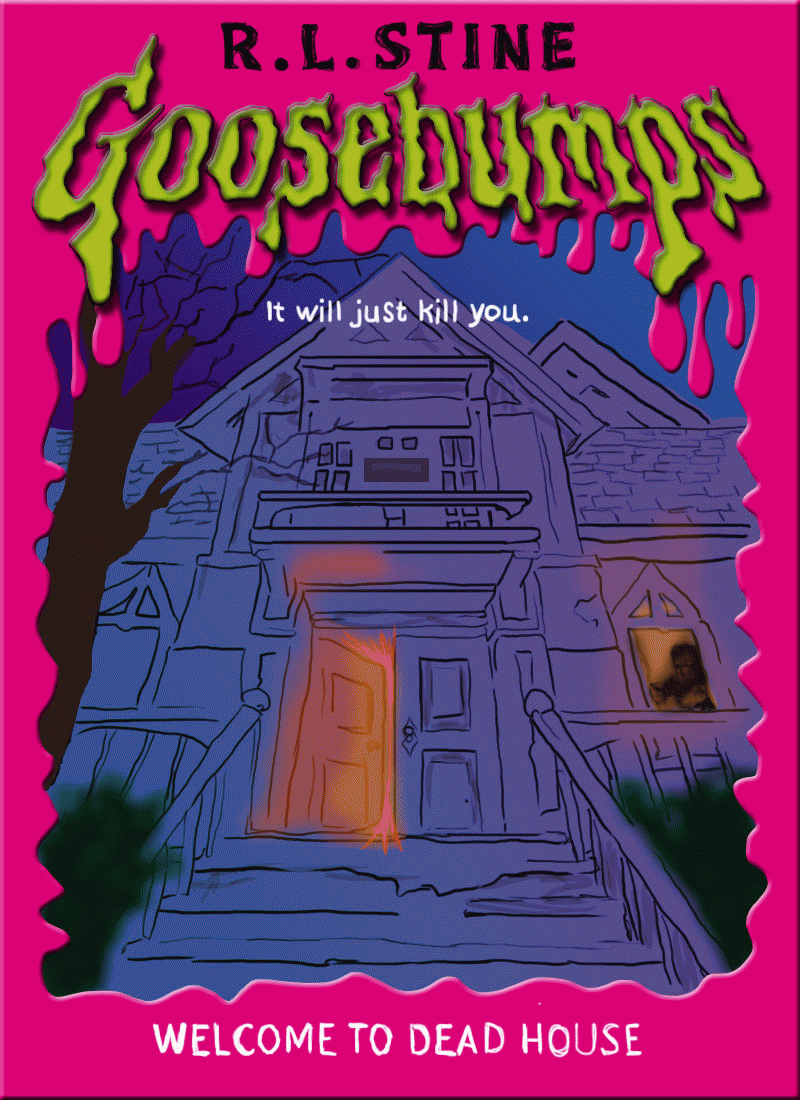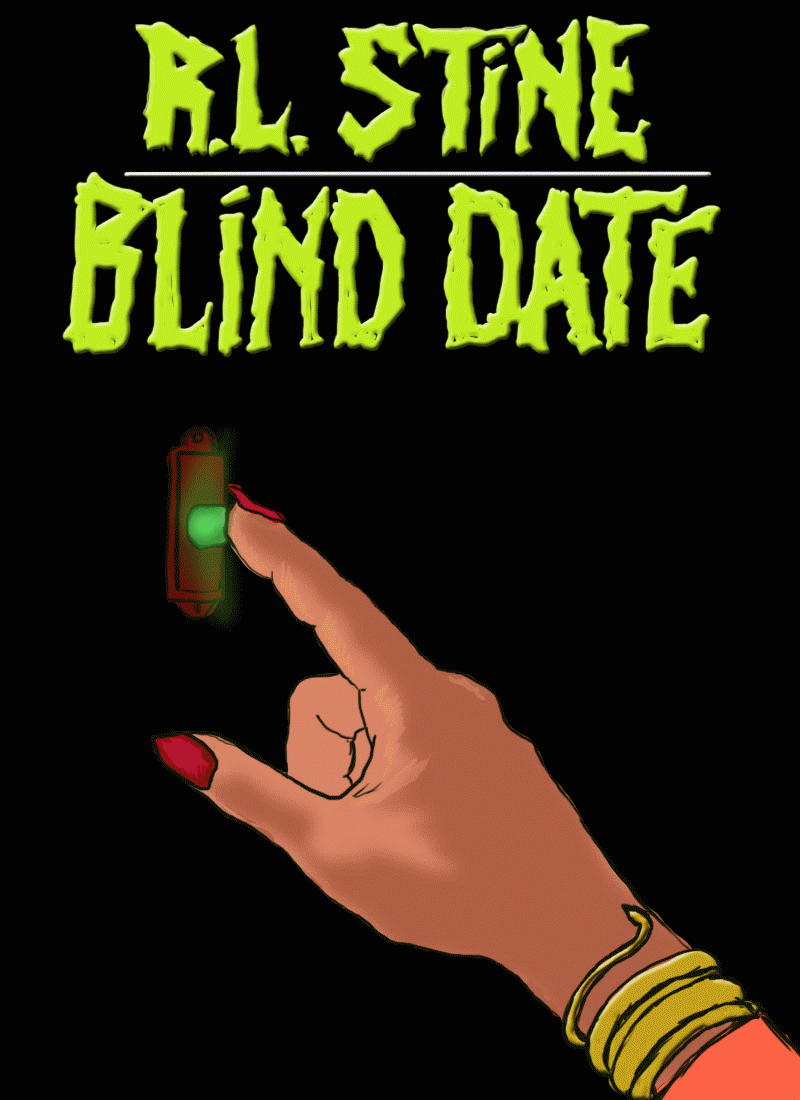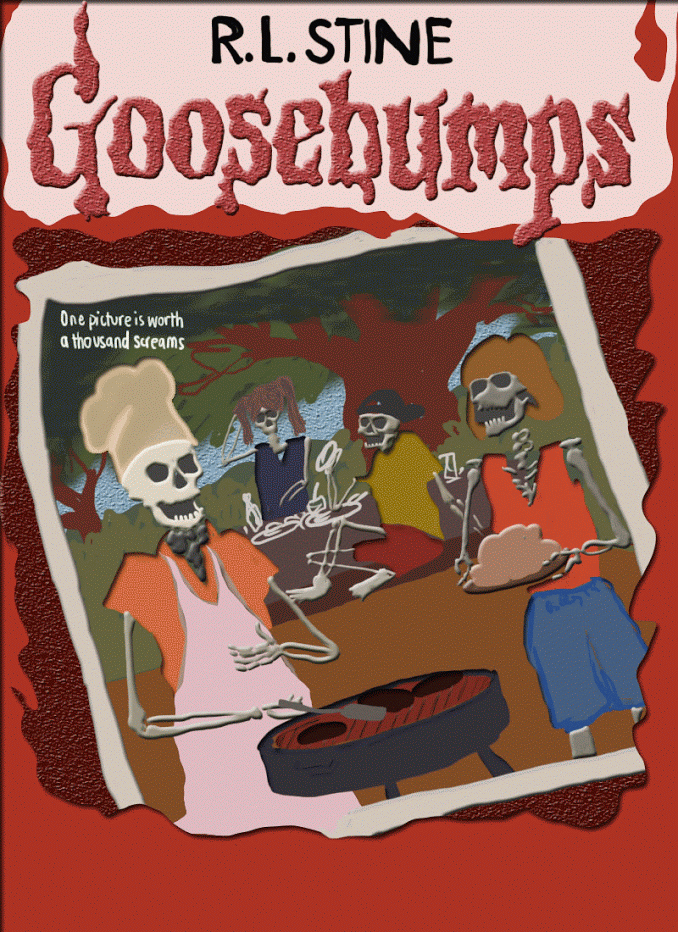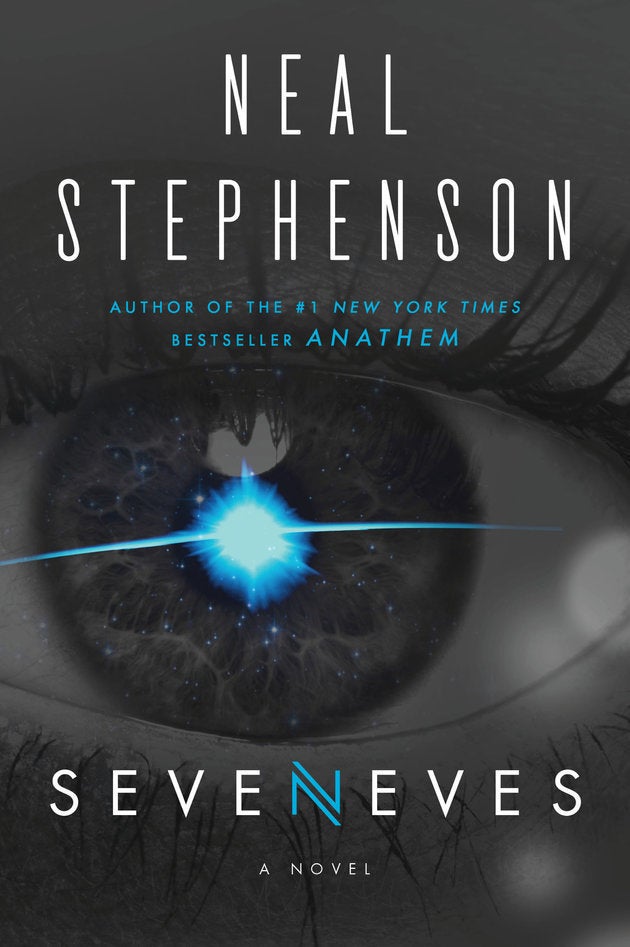In a two-story house in suburban Ohio, something was lurking.
Was it a strange presence in the attic, whipping around corners and rattling the floorboards, that lent the house an air of eeriness? Or was it a shadowy figure sitting stone-still in a dark basement, patiently awaiting the next underground visitor?
More likely, neither of these mystical beings were present in the childhood home of horror writer R.L. Stine. It was the absence, rather than the presence, of such scary creatures that allowed him to dream them up over the course of his storied career.
And what a storied career. Stine has written hundreds and sold millions of books over the past few decades, most of them belonging to his beloved Goosebumps and Fear Street series, made popular by TV and movie adaptations. He's still writing Fear Street books and scary adult stories -- in his most recent, The Lost Girl, a yearbook from decades earlier clues a clan of kids into a classmate's spooky identity.
Stine’s life as a writer of the weird and wicked will be celebrated in a kid’s movie starring Jack Black, highlighting the nostalgic monsters from Goosebumps books.
“He’s a good R.L. Stine. He’s a lot more sinister than I am, Jack. He’s a lot more evil,” Stine said in an interview with The Huffington Post.
He’s right: Stine might’ve shown up to meet me wearing all black, but nothing else about his appearance alluded a witchy interior life. The creator of stories that haunted so many '90s kids’ childhoods was mostly kind, if matter-of-fact. “Kids are always disappointed when I visit schools and come out,” he said. “They expect me to be evil or maybe wear a black cape or have fangs or something, and then this old guy walks out and they say, ‘Oh, no.’”
For our full interview with R.L. Stine, listen to the audio clip.
Though capeless, Stine offered me anecdotes from his childhood, and insights into the decidedly practical writing process that would lead to such whimsical tales of horror and intrigue as Night of the Living Dummies and Say Cheese and Die. In the latter book -- a philosophical story as far as Goosebumps goes -- a mythical camera has the power to cast its subjects forever into the afterlife, or at least give those who pose for it minor injuries. Like many of Stine’s books, there are cultural references embedded within it. In fact, Stine got the idea for the book from a similar episode of “The Twilight Zone” called “A Most Unusual Camera.”
“A lot of the Goosebumps titles are from these '50s horror movies my brother and I saw every week,” Stine said. “‘It Came from Beneath the Sea’ became a Goosebumps book called It Came from Beneath the Sink. That kind of thing.”
Aside from the horror movies he saw on Sundays with his brother -- which, it’s worth noting, Stine found more funny than scary -- his childhood was typical. Beyond being bullied as a kid, there wasn’t much for him to be afraid of, at least within the walls of his own home, where Stine would stake out for hours, typing feverishly on his aunt’s typewriter.

“I was like nine years old, and I’d be in my room, typing, typing up joke magazines and funny little comics,” Stine said. “I never planned to be scary, I always just wanted to be funny. And I’d be typing up these funny stories, but I don’t know why. And my mother would be outside my door, and she’d say, ‘What’s wrong with you? Go outside and play!’ And I’d say, ‘It’s boring out there!’ Someone asked me what’s the worst advice anyone ever gave you, and I had to say, it’s my mother saying, ‘Stop typing and go outside and play.’”
Stine had been writing humor magazines for decades, developing his voice while contributing to Ohio State University's satirical paper The Sundial in the mid-'60s, before he fell slantwise into writing scary books. Under the pen name of “Jovial Bob,” he wrote 101 School Cafeteria Jokes, The Cool Kid’s Guide to Summer Camp, and, yes, 101 Silly Monster Jokes, and many others until he wrote his first horror story in 1986. Even with his Goosebumps and Fear Street series, Stine insists that it’s never his aim to write straightforwardly scary books; his stories are, in his opinion, a combination of humor and fear.
“It’s the same kind of guttural reaction,” Stine said, adding, “I’m kind of odd because scary stuff doesn’t scare me. Horror always makes me laugh. I’m always the one in the movie theatre and the shark comes up, and it chews the girl up -- I’m always the one laughing. I don’t know why.”

Perhaps its his ability to view scary situations as an objective outsider rather than a participant. When Stine describes how he began writing Goosebumps books, or where he gets his ideas for his scariest scenes, he’s notably hard-nosed. He has no illusions about divine inspiration or the uniqueness of his ideas. Instead, it’s clear that Stine views writing as a job, and his celebrated series as his successful business.
“I was so pleased with myself,” Stine said about the day he conceived of his first horror series. “I had individual titles of teen horror, I was just starting out. The first one was called Blind Date. The next was called Twisted. And the publisher wanted one a year, and I thought, gee, one a year? There must be a way to do a series. And then we started thinking about location and that kind of thing, and I thought, if I can think of a good name for the series, I’ll be off to a good start.”
The name popped into his head, a punchy-sounding packaging: “Fear Street.” From those words, he came up with a concept: rather than a recurring cast of characters, which would be impractical for a genre that concerns itself with killing off protagonists, the events would all center on a cursed residential street -- one that could exist in any suburban town.
“Of course, I always wonder why they don’t move to Happy Street,” Stine joked, adding that it was essential to him that the setting be Midwestern. Although he promptly moved to New York City after college, and still lives there with his wife and son Matthew, Stine won’t set a horror book there on principle.
“It’s a superstition,” Stine said. “I’ve never done it. A lot of kids don’t know New York. They know a nice suburban backyard, but they don’t know New York City. It’s kind of elite in some ways, I think. I think it would make the stories more obscure for kids.”

So, guided by his principles about relatable storytelling, Stine was sure to set each Goosebumps and Fear Street book in a nondescript, middle-class kitchen or basement. This virtue-driven approach echoes throughout his entire approach to writing: Stine praises the merits of a detailed outline, and of writing the titles and the endings to his scary stories first, “so I know how to fool the reader and keep them from getting to the end [before me].”
“I work backwards from most authors,” Stine said. “Most authors have an idea for a book, they write, they’re writing, later on they think of a title. I have to start with a title. It leads me to the story. Kids always ask -- everyone asks -- ‘Where do you get your ideas?’ I wanna say, ‘Where do you get your ideas?’ Because we all get ideas. Mine actually come from thinking of the title first. The first of the new Fear Street books -- Party Games -- I had that title, and I thought, it lead me to the story. There’s a party. Maybe it’s a birthday party. Maybe they’re playing some kind of games and the games get out of hand.”
Next, Stine painstakingly drafts a 15-20 page outline that includes plot and dialogue before he sets out to fill in the holes. The biggest point of deliberation that he dwells on is making sure the scares in his works are suitable for the age group he’s writing for.
“I’m very careful in Goosebumps,” Stine said. “I have to make the kids know that what’s happening in the book couldn’t really happen. That it’s just a fantasy. And then when I write a Fear Street book or an adult book, I have to make people think it could happen. It’s kind of the opposite.”
Still, he insists that most fears are universal, existing from when we’re young and gullible, through the travails of adulthood.
“I think we all have the same kind of fears. And it’s the one thing that doesn’t change. Fear of the dark, fear there’s something in the closet, fear there’s someone under your bed waiting to grab your ankle when you sit up,” Stine said. “People always say, ‘How’ve kids changed? Over all the time you’ve been writing these books, how have they changed?’ And I always say, well, the technology has changed but the fears don’t change.”
Stine, the master of crafting scary scenarios, counts himself exempt from these universal fears. When I asked him what he was scared of, he said, “Not a thing.”
Laughing, he added, “Normal adult things. All these years and I don’t have a good answer for that question. That’s terrible, isn’t it?”
Audio produced by Katelyn Bogucki and edited by Brad Shannon.
Also on HuffPost:

